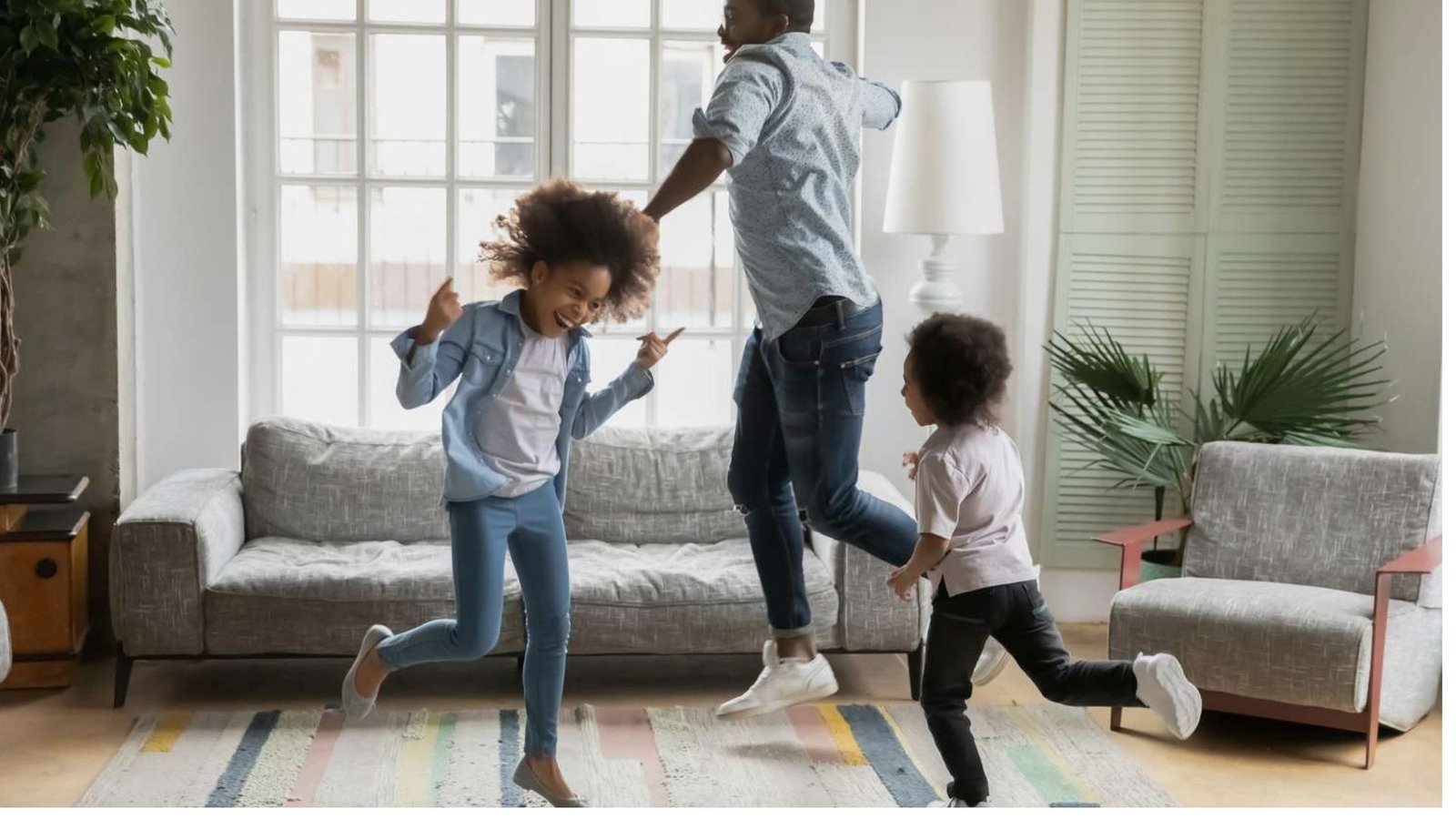Music is a powerful tool for early childhood development, fostering creativity, improving motor skills, enhancing language development, and boosting mood. Incorporating music into your kids’ play space not only enhances their playtime but also creates an environment that encourages learning and emotional growth. Here are several ways to seamlessly integrate music into your child’s play area, making it both fun and educational.

Create a Dedicated Music Corner
Designate a specific area in the play space as a music corner. This could be a small, quiet section of the room filled with instruments, music-themed decor, and sound-making objects. The music corner can encourage your child to explore different sounds and create their own music.
- Instruments: Include simple, kid-friendly instruments such as tambourines, maracas, xylophones, or drums. These instruments help children develop a sense of rhythm and motor coordination.
- Soft Furnishings: Add comfy cushions or bean bags to the corner so your child can sit and enjoy playing or listening to music comfortably.
Use Musical Wall Art
Incorporate musical-themed artwork or decor that can engage your child’s interest. Wall decals or posters featuring musical instruments, notes, or famous composers can help create a visually stimulating environment while keeping the theme playful.
- Interactive Wall Panels: Consider using interactive music panels or soundboards that let kids play melodies by pressing buttons or tapping surfaces. This not only enhances the aesthetic but also gives your child a chance to engage with sound physically.
Install a Music Player or Speaker System
Having a music player or speaker system in the play space is one of the easiest ways to provide a consistent stream of music. Playlists with child-friendly music, lullabies, or classical tunes can set the tone for playtime, naptime, or even learning activities.
- Bluetooth Speakers: Choose a durable, child-friendly speaker that connects to your phone or tablet. This way, you can easily control the music being played.
- Pre-set Playlists: Curate playlists of nursery rhymes, classical music, or calming sounds that your child can enjoy while they play. Streaming services like Spotify or YouTube also offer pre-made playlists specifically designed for children.
Introduce Musical Toys
There are many musical toys designed for children that encourage hands-on exploration. Instruments like musical keyboards, drum sets, or piano mats can provide hours of entertainment while teaching kids about rhythm, pitch, and melody.
- Musical Mats: These are interactive mats that make sounds when kids step on them. They’re a great way to combine movement with music.
- Toy Instruments: Small toy instruments such as mini guitars, keyboards, or handbells help children experiment with creating sounds, building coordination, and developing an appreciation for music.
Incorporate Music-Based Games
Use music-based games to help develop listening skills and rhythm. These games can encourage your child to move to the beat, imitate rhythms, or recognize different sounds.
- Freeze Dance: Play fun, upbeat music and encourage your child to dance. When the music stops, they must freeze in place. This game helps kids understand timing and rhythm while burning energy.
- Musical Chairs: A classic game, musical chairs is excellent for teaching your child how to follow music and react to cues. It also promotes social interaction with friends and family.
- Sound Identification: Play different types of music or sounds and ask your child to identify them. This can improve listening skills and enhance their ability to distinguish between various sounds.
Listen to Music While Reading
Combine music with reading to create a multisensory experience. Play soft, background music during reading time or choose books that come with an audio version. The music can set a calming tone and help your child focus on the story.
- Interactive Books: There are many children’s books that come with built-in sound effects or musical tracks that can play when buttons are pressed. These interactive books can make reading more engaging and fun.
- Calming Music: For bedtime stories, consider using soothing, calming music to help your child wind down and get ready for sleep.
Add a Music-Themed Rug or Flooring
A fun way to incorporate music into your play space is through the flooring. Consider adding a music-themed rug, like one shaped like a piano keyboard, or a rug with musical notes. These can be both decorative and educational, providing a tactile experience for your child to play and learn on.
- Musical Mats: These mats can also have sound features that activate when stepped on, making them even more interactive. It’s a playful way to combine music with physical movement.
Final Thoughts
Incorporating music into your kids’ play space is an easy and fun way to foster their cognitive, emotional, and physical development. Whether through instruments, interactive toys, or music-based activities, creating a musical environment can boost your child’s mood, spark their creativity, and even improve their social and language skills. By making music an integral part of their play space, you’re giving your child a gift that lasts a lifetime—an appreciation for the joy and power of music.










